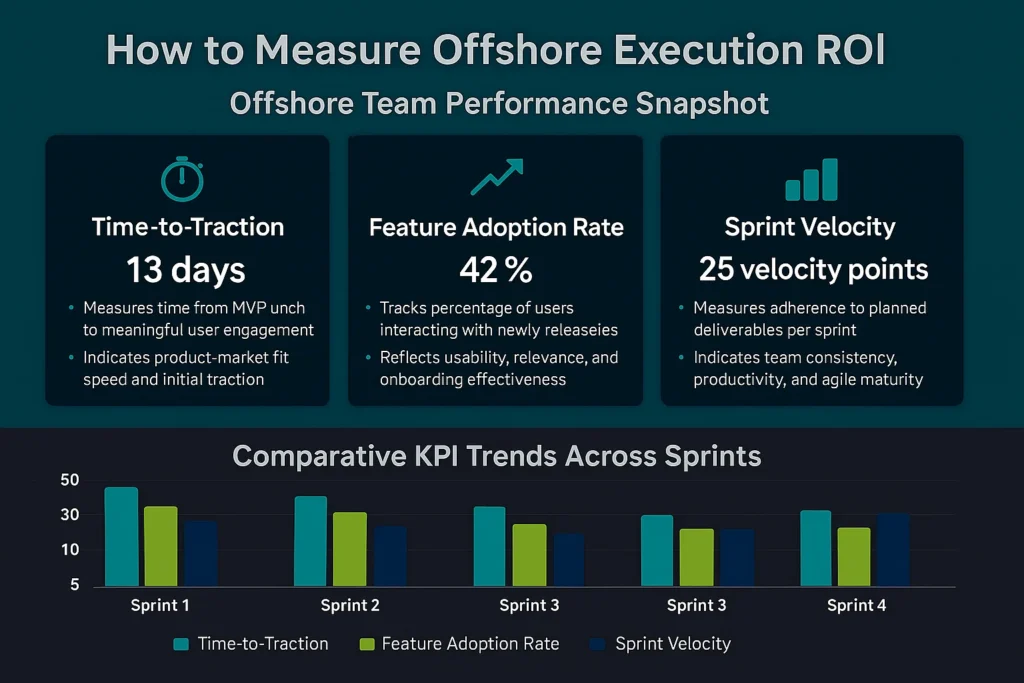Startups are under constant pressure to deliver a minimum viable product (MVP) quickly while staying within limited budgets. Hiring offshore talent in Latin America (LATAM) offers a cost-effective way to achieve this balance. Developers in LATAM typically charge 30–50% less than U.S. or European counterparts while maintaining comparable skill levels (Index.dev, 2025). This cost advantage allows startups to allocate more resources to customer acquisition, testing, and iteration.

LATAM development teams can contribute to every stage of the product lifecycle—ideation, prototyping, development, testing, and launch. With overlapping time zones and strong English proficiency, these teams facilitate real-time communication, thereby reducing delays and enhancing alignment (Ardan Labs, 2024). Agile methodologies are widely adopted in the region, making LATAM developers adept at handling rapid changes and iterative product cycles.
A notable example is a U.S. FinTech startup that partnered with Applaudo, a LATAM-based software development company, to build its MVP. Within nine months, the offshore team delivered a secure, scalable platform with 95% sprint velocity adherence and zero downtime post-launch (Applaudo, 2024). Similarly, MeltStudio worked with LATAM developers to create an MVP for Truvle in just four months, which directly led to a major commercial partnership (MeltStudio, n.d.).

Phase | Roles Involved | Timeline |
Ideation | Product Manager, UX Designer | 1–2 weeks |
Prototype | UX/UI Designer, Front-end Dev | 2–3 weeks |
Core Development | Back-end Developer, QA Engineer | 4–6 weeks |
Launch & Support | DevOps, QA, Support Rep | 2 weeks |
Clear timelines and defined responsibilities help distributed teams work efficiently, especially in agile sprints (Ardan Labs, 2024).

Measuring offshore team performance through KPIs ensures accountability:
These KPIs help founders quickly assess whether offshore collaboration is delivering ROI (Index.dev, 2025).

Risks in offshore work—such as misalignment or communication issues—can be reduced by starting with paid trial projects, using shared dashboards for KPI tracking, and holding regular sprint reviews. LATAM’s cultural alignment and time zone compatibility give startups a natural advantage in mitigating these risks (MeltStudio, n.d.).
Risks in offshore work—such as misalignment or communication issues—can be reduced by starting with paid trial projects, using shared dashboards for KPI tracking, and holding regular sprint reviews. LATAM’s cultural alignment and time zone compatibility give startups a natural advantage in mitigating these risks (MeltStudio, n.d.).
Join thousands of businesses leveraging offshore staffing to scale their operations globally
Expand effortlessly with My Offshore Employees - access top 1% offshore talent starting at just $3/hr or $600/month per FTE. No hidden fees, no compromises on quality. Your offshore employees work exclusively for you - ensuring focus, transparency, and real-time visibility into your projects. We combine smart automation and proven industry experience to deliver higher productivity, fewer errors, and tailor-made solutions for your business growth.
© 2025. All Rights Reserved.